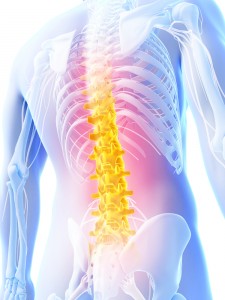Back Pain
Lumbar Radiofrequency Ablation (Neurotomy/Rhizotomy)
Lumbar Radiofrequency Ablation (RFA), a minimally-invasive procedure also known as Radiofrequency (RF) Rhizotomy or Neurotomy, is a treatment which follows a successful Lumbar Medical Branch Block or Lumbar Facet Cortisone Injection to treat Lumbar Facet Arthritis. RFA reduces or eliminates the pain of damaged facet joints by disrupting the medial branch nerves that carry pain signals.
During the procedure, the patient lies on their stomach with a pillow placed under the stomach for comfort. The physician uses a live X-Ray machine called a fluoroscope to locate the appropriate facet joints. A small amount of local anesthetic is used to numb the skin to keep the patient comfortable throughout the procedure. With the guidance of the fluoroscope, the physician carefully guides a special needle-like tube called a cannula over the desired medial branch nerve. A radiofrequency electrode is then inserted through the cannula and the physician tests the electrode’s position by applying a weak electric impulse. If placement is successful, the nerve is numbed and the tip of the electrode is heated to disrupt the nerve’s ability to send pain signals to the brain. A small amount of steroid is then applied to soothe the area, the cannula is removed, and a small band-aid is applied.
Generally, pain relief from Radiofrequency Ablation should last longer than Lumbar Facet Cortisone Injection. Alternatives to Radiofrequency Ablation include PRP treatments and Bone Marrow Concentrate therapies.

